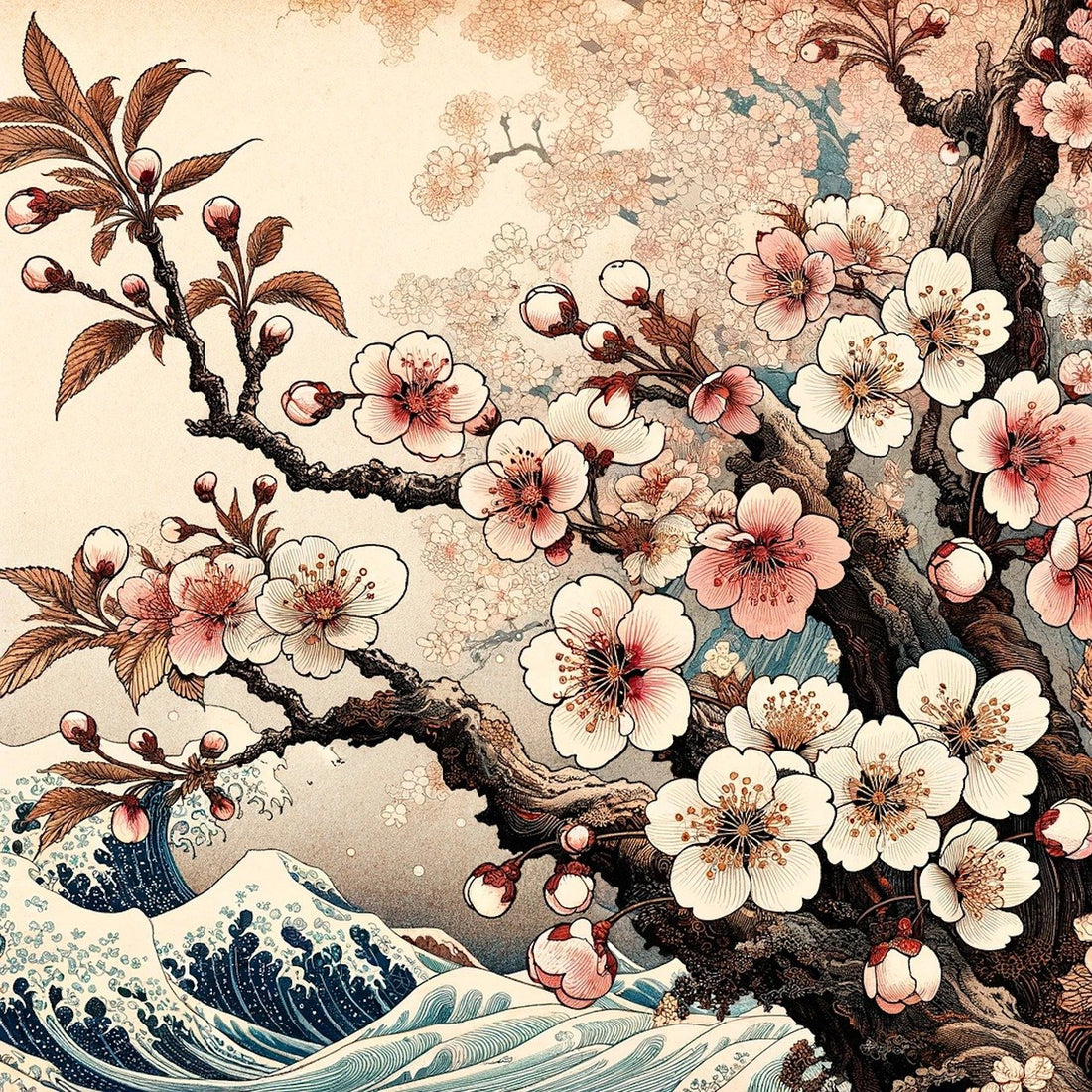【Introducing Ukiyo-e, one of the most highly regarded art forms in Japan.】
Origin of Ukiyo-e
The word "ukiyo" is derived from "憂き", which is derived from "憂き" with the noun "世" meaning "world", from "憂き" meaning "bitter" or "painful" during the long period of warfare before the Edo period. As development and stability began to appear in the Edo period (1603-1867), the word "ukiyo" began to express the joy of life, especially among merchants who had more leisure time at that time, and "憂き世" changed to "浮世" (floating world), a word of enjoyment.

Early modern genre paintings depicting people's daily lives
Gradually, the word "ukiyo" came to mean "contemporary" or "today" in the positive sense of the world, customs, manners, and ideas of the time. As a result, for the first time, artists were inspired by and responded to the interests and tastes of the general public. Artists who had previously painted for court nobles and warriors shifted to early modern genre paintings depicting people's daily lives, which in turn became ukiyo-e, reflecting a mood of enjoyment and pleasure.
Popularization of Ukiyo-e
The main focus of ukiyo-e was to depict the present. The subjects were the latest customs and themes of the time, and people always enjoyed the elaborate depictions. The pleasures of the common people in the Edo period, "games" and "plays", were depicted in ukiyo-e as "beauties" and "actor's pictures", and ukiyo-e quickly became popular with the general public as a substitute for fashion magazines and posters and bromides of Kabuki actors.
The first ukiyo-e
The first ukiyo-e artist is said to have been Hishikawa Moronobu, known for his "Migaraki Bijin" (The Beauty Who Looked Back). Born in Boshu, Shigenobu moved to Edo (today's Tokyo) where he learned the techniques of the shogunate and the official painters of the imperial court. He gradually distinguished himself and became active in the field of ink and brush prints, which were independent of illustrations, and laid the foundation for the development of ukiyo-e.
Ukiyo-e began in the early Edo period with sumi-printed prints, which were made independently from the illustrations in illustrated books (hannpubon). These were then sold in town and distributed for the enjoyment of the general public. In time, people grew tired of sumi-zuri prints and began to demand richer color expression, and several techniques for coloring sumi-zuri prints were developed in response.
In the mid-Edo period, the use of "printing blocks" for coloring began. Multicolored prints could be produced in large numbers by marking the woodblocks so that the colors would not shift when the plates were printed. It was called Azuma Nishikie and became a new specialty of Edo.
Ukiyo-e for viewing often served a practical purpose as well. Ukiyo-e for viewing often served a practical purpose as well: "hikifuda", which were equivalent to leaflets, were used to advertise cosmetics and their product names, and pictures of actors and beauties dressed in trendy fashions served as a kind of modern fashion magazine. Ukiyo-e also spread throughout Japan as an advertising medium that conveyed the latest information of the time.


The spread of Ukiyo-e throughout Japan
Ukiyo-e prints were produced by the combined efforts of a publisher, an engraver, a printmaker and a printer. In addition to the artist's skills, the publisher's planning ability and the engraver's and printer's skills determined how well the prints sold. At that time, most of the work was left to the sole discretion of the publisher. Therefore ukiyo-e is not a pure work of art created by a single artist, but rather a commodity or a craft-like work of painting.
Ukiyo-e had a great impact on the West as a representative art form of Japan, starting with its appearance at the World Exhibition in Paris, France in 1867, which triggered a great movement of traditional Japanese art represented by Ukiyo-e in Europe at the end of the 19th century.This movement is known as Japonism.In Japan at that time ukiyo-e was not considered a valuable work of art and many ukiyo-e crossed the seas, especially at the beginning of the 20th century.This Japonism developed over more than half a century, from the mid-19th century to the early 20th century, and greatly influenced Western painting and crafts, such as Impressionism.
There is a famous episode in the Edo period (1603-1867) when ukiyoe spread among many Western artists as they crossed the sea as wrapping paper for export pottery.Of course, not only this single event, but also the introduction of ukiyo-e at the Paris World Exhibition (1867), the first time Japan participated in such an event, led to the subsequent ukiyo-e boom and even to Japonisme.
The publishing of ukiyo-e was the domain of the picture-book wholesalers (jihon wholesalers) who handled the "jihon," or mass entertainment books, produced and sold in Edo. Centered in Nihonbashi, where many ukiyo-e wholesalers were concentrated, the "picture book shops" were scattered throughout the Edo area and dealt only with sales. The popularity of ukiyo-e during this period was largely due to the presence of ezo-ya, which made it easy for the general public to purchase ukiyo-e.
